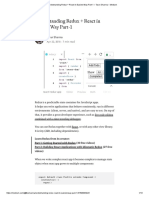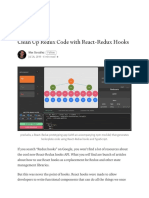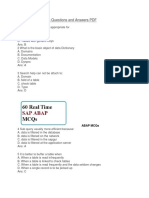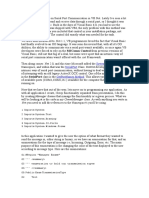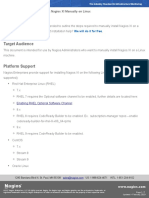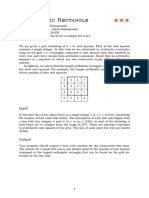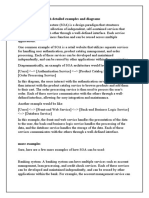21.
React Redux
Table of Content
1. Introduction to Redux with React
2. How Redux works
3. Working implementation of Redux
4. Advantages of Redux
1. Introduction to Redux with React
Redux is a state management library. React follows
the component-based approach, where the data
flows through the components. In fact, the data in
React always flows from parent to child components
which makes it unidirectional
But what happens when we try to communicate from
a non-parent component?
A child component can never pass data back up to
the parent component. React does not provide any
way for direct component-to-component
communication. Even though React has features to
support this approach, it is considered to be a poor
practice. It is prone to errors and leads to spaghetti
code. So, how can two non-parent components pass
data to each other?
This is where React fails to provide a solution and
Redux comes into the picture.
21. React Redux 1
Redux provides a “store” as a solution to
this problem. A store is a place
where you can store all your application
state together. Now the components can
“dispatch” state changes to the store and
not directly to the other
components. Then the components that
need the updates about the state
changes can “subscribe” to the store.
Thus, with Redux, it becomes clear where the components get their state from as well
as where should they send their states to. Now the component initiating the change
does not have to worry about the list of components needing the state change and can
simply dispatch the change to the store. This is how Redux makes the data flow easier.
2. How Redux works
ACTION: An object setting up information about our data moving into state.
21. React Redux 2
DISPATCH: Functions which act as a bridge between our actions and reducers sending
the information over to our application.
REDUCER: A function that receives data information from our action in the form of a
type and payload and modifies the state based on additional provided data.
STATE: Where all the data from our reducers are passed into a central source.
Store Once we have our Actions and Reducers set up everything is maintained in our
Store. The Store is where we can set up our initial state, combine our reducers, apply
middleware and hold our information.
Provider We can then use the Provider to wrap our store around our application and by
doing so pass and render our state. We *can then use Connect *with a component and
enabling it to receive Store state from the Provider.
3. Working implementation of Redux
Install the following packages:
npm install @reduxjs/toolkit react-redux
Create Reducers & Actions using createSlice
Creating a slice requires a string name to identify the slice, an initial state value, and
one or more reducer functions to define how the state can be updated. Once a slice
is created, we can export the generated Redux action creators and the reducer
function for the whole slice.
import { createSlice } from '@reduxjs/toolkit'
const initialState = {
value: 0,
}
export const counterSlice = createSlice({
name: 'counter',
initialState,
reducers: {
21. React Redux 3
increment: (state) => {
state.value += 1
},
decrement: (state) => {
state.value -= 1
},
incrementByAmount: (state, action) => {
state.value += action.payload
},
},
})
export const { increment, decrement, incrementByAmount } = counterSlice.actions
export default counterSlice.reducer
Add Slice Reducers to the Store
A store is a JavaScript object which can hold the application’s state and provide a
few helper methods to access the state, dispatch actions and register listeners. The
entire state/ object tree of an application is saved in a single store. As a result of
this, Redux is very simple and predictable.
import { configureStore } from '@reduxjs/toolkit'
import counterReducer from '../features/counter/counterSlice'
export const store = configureStore({
reducer: {
counter: counterReducer,
},
})
Add store provider to the App
import App from './App'
import { store } from './app/store'
import { Provider } from 'react-redux'
ReactDOM.render(
<Provider store={store}>
<App />
</Provider>,
21. React Redux 4
document.getElementById('root')
)
Dispatch actions in Components
Now we can use the React-Redux hooks to let React components interact with the
Redux We can dispatch actions using useDispatch
import React from 'react'
import { useDispatch } from 'react-redux'
import { decrement, increment } from './counterSlice'
export function Counter() {
const dispatch = useDispatch()
return (
<div>
<div>
<button
onClick={() => dispatch(increment())}
>
Increment
</button>
<button
onClick={() => dispatch(decrement())}
>
Decrement
</button>
</div>
</div>
)
}
Read state data in components
We can read data from the store with useSelector hook.
import React from 'react'
import { useSelector } from 'react-redux'
export function ShowCounter() {
21. React Redux 5
const count = useSelector((state) => state.counter.value)
return (
<div>
<div>
<span>{count}</span>
</div>
</div>
)
}
4. Advantages of Redux
Following are some of the major advantages of Redux:
Predictability of outcome – Since there is always one source of truth, i.e. the
store, there is no confusion about how to sync the current state with actions and
other parts of the application.
Maintainability – The code becomes easier to maintain with a predictable outcome
and strict structure.
Developer tools – From actions to state changes, developers can track everything
going on in the application in real time.
Community and ecosystem – Redux has a huge community behind it which
makes it even more captivating to use. A large community of talented individuals
contribute to the betterment of the library and develop various applications with it.
Ease of testing – Redux code are mostly functions which are small, pure and
isolated. This makes the code testable and independent.
Organization – Redux is very precise about how the code should be organized, this
makes the code more consistent and easier when a team works with it.
Assignments
21. React Redux 6
1. Build a Notes App with Create, Update and Delete Notes functionalities using
Redux.
2. Create a Login page and store the user information inside the redux store, display
the information inside the profile page using React Redux.
3. Create a cart app, where you can create new cart item along with the counter to
increment and decrement the quantities of the items. Inside the Navbar component,
display the total amount of items and total cart amount using React Redux
21. React Redux 7



